Hyderabadi Cuisine is a royal feast for the senses, showcasing the culinary excellence of the Nizams. Known for its rich, aromatic biryanis, Hyderabadi cuisine offers a delectable blend of Mughlai and Telugu flavors. The iconic Hyderabadi Biryani, with its fragrant basmati rice, succulent meat, and aromatic spices, stands as a symbol of this regal culinary heritage. From the flavorful Haleem to the tangy Mirchi ka Salan, the cuisine boasts diverse delights. Desserts like Qubani ka Meetha and Double ka Meetha provide a sweet conclusion to this gastronomic journey, making Hyderabadi cuisine a cultural treasure.
Hyderabadi Biryani
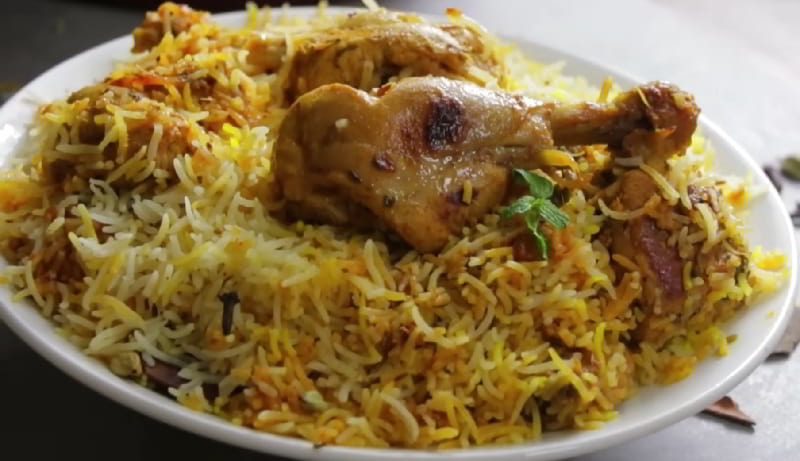
Hyderabadi Biryani, an epitome of culinary excellence, traces its origins to the royal kitchens of the Nizams in Hyderabad, India. This iconic dish has transcended time, evolving into a symbol of the city's rich cultural heritage. The heart of Hyderabadi Biryani lies in the meticulous layering of basmati rice and marinated meat, typically chicken or mutton, with aromatic spices.
The key ingredients include fragrant basmati rice, meat, yogurt, saffron, fried onions, and an array of spices such as cardamom, cloves, and cinnamon. The meat undergoes a marination process with a blend of spices and yogurt, imparting depth and tenderness to the final dish. Using the conventional "Dum Pukht" cooking technique involves arranging marinated meat and partially cooked rice in a sturdy, heavy-bottomed vessel. The vessel is sealed with dough, creating a hermetic environment for slow cooking. This method ensures the rice absorbs the meat's flavors, resulting in a biryani that is aromatic, flavorful, and exquisitely textured.
The final masterpiece, with its fragrant aroma and succulent meat, reflects the culinary prowess of Hyderabad. Hyderabadi Biryani stands as a timeless embodiment of the city's royal culinary legacy, inviting enthusiasts to savor the regal symphony of flavors and spices in every mouthful.
Nihari
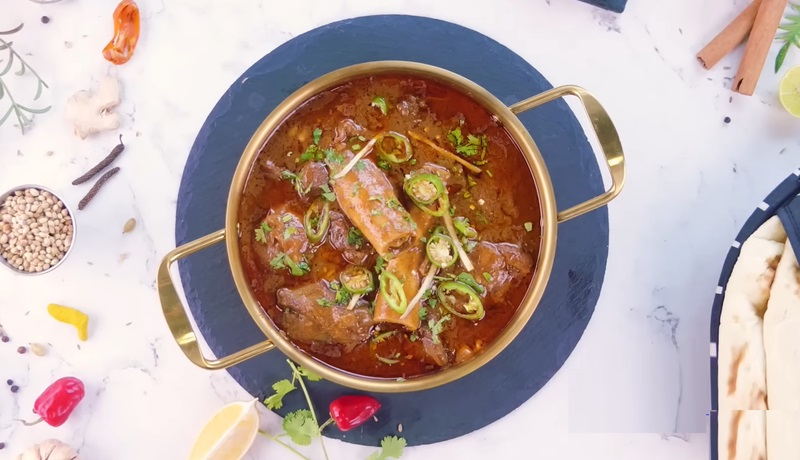
Nihari is a traditional and highly esteemed dish that is known for its rich and aromatic flavors. Originating from the Mughlai cuisine, it has become a staple in Hyderabadi cuisine. Nihari is a slow-cooked stew made with tender pieces of meat, usually beef or lamb, along with bone marrow, spices, and a thick gravy. The dish gets its distinct flavor from a blend of spices like cinnamon, cloves, cardamom, nutmeg, and mace, which are slow-cooked to perfection. The slow cooking process allows the meat to become incredibly tender and infuses the gravy with intense flavors. It is usually enjoyed with naan or kulcha, and often garnished with fried onions, coriander leaves, and a squeeze of lemon. Nihari is typically prepared overnight and enjoyed as a special breakfast or brunch dish. It is believed to be a perfect winter delicacy due to its warming and hearty nature. The dish is known for its rich and flavorful taste, making it a favorite among those who enjoy indulging in spicy and aromatic flavors.
Hyderabadi Haleem

Hyderabadi Haleem, a culinary masterpiece, epitomizes the rich tapestry of flavors in the Nizami cuisine of Hyderabad, India. This slow-cooked and hearty dish traditionally makes its appearance during the holy month of Ramadan, where it has become a symbol of communal feasting. Haleem is a harmonious blend of wheat, barley, lentils, and meat, usually beef or mutton, cooked to a velvety consistency.
The unique preparation involves simmering the ingredients for hours until they amalgamate into a thick, porridge-like texture. This slow-cooking process not only allows the grains to break down but also lets the meat tenderize, resulting in a delightful, wholesome dish. Infused with an aromatic blend of spices, Haleem is often garnished with fried onions, fresh herbs, and a squeeze of lime for added zest. The prestigious 'Most Popular Geographical Indication (GI)' award in the food category was conferred upon Hyderabadi Haleem in October 2022. This accolade was determined through a voting system organized by the Department for Promotion of Industry & Internal Trade, recognizing the widespread popularity and acclaim that Hyderabadi haleem enjoys in the culinary landscape.
Served hot, Hyderabadi Haleem is more than just a culinary delight; it's a cultural experience that brings people together. Its popularity has transcended regional boundaries, becoming a symbol of communal harmony and festive joy. As a comforting and nourishing dish, Hyderabadi Haleem continues to captivate the palates of those who seek a taste of the city's rich culinary heritage.
Shami Kebab
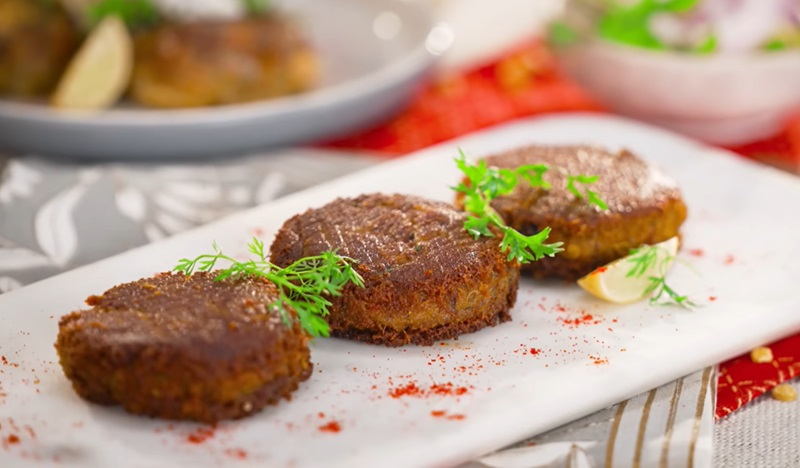
Hyderabadi cuisine is known for its rich and flavorful dishes, and one such delight is the Shami kebab. Shami kebab is a popular dish in the city of Hyderabad, India, and is loved for its succulent texture and aromatic spices. The preparation involves combining minced meat with soaked and ground Bengal gram (chana dal), creating a velvety and flavorful mixture. A medley of aromatic spices, including cloves, cinnamon, cardamom, and cumin, further enhances the kebab's profile. The addition of ginger, garlic, and fresh herbs contributes to the rich and savory taste. Traditionally, Shami Kebabs are shaped into round patties and shallow-fried until they acquire a golden-brown exterior. Served hot, they are a popular appetizer, snack, or accompaniment to meals, often paired with sliced onions, mint chutney or yogurt for added zest.
The secret to the deliciousness of Shami kebab lies in its unique blend of spices. It can also be enjoyed as a filling in a bun or wrapped in a flatbread, making it a perfect street food option. With its melt-in-your-mouth texture and tantalizing flavors, Shami kebab is a must-try dish for all food enthusiasts, showcasing the culinary excellence of Hyderabadi cuisine.
Zarda
-1706076852.jpg)
Zarda, a cherished sweet rice delicacy native to the Indian subcontinent, is crafted by boiling rice with milk, sugar, saffron, and infused with the aromatic essence of cardamom. Adorned with raisins, pistachios, or almonds, the name 'zarda' originates from the Persian word 'zard,' signifying 'yellow,' owing to the addition of food coloring that imparts a vibrant golden hue to the rice. Traditionally served post-meal, zarda holds a significant place in celebratory gatherings, particularly weddings, across the Indian subcontinent. Its resemblance to sholezard in Iranian cuisine and zerde in Turkish traditions highlights its cultural connections.
Tracing its roots to Mughal India, a variant of zarda included small fried sweetmeat pieces, known as 'mutanjan,' a favorite of Emperor Shahjahan. This decadent rice dish, often prepared at his behest, became a staple at grand banquets and special occasions, offering a timeless taste of culinary history.
Osmania Biscuit

Hyderabadi cuisine is known for its rich and flavorful dishes, and one such delicacy is the Osmania biscuit. This popular snack originated in the city of Hyderabad in India and has gained immense popularity not only in the region but also across the country. Osmania biscuits are a perfect blend of sweetness and buttery goodness. They are crispy on the outside and soft on the inside, making them a delightful treat for all biscuit lovers. The biscuits are made with a combination of flour, sugar, butter, and a hint of cardamom for a unique and aromatic flavor. These biscuits are named after the last ruler of Hyderabad, Mir Osman Ali Khan, who was known for his love for fine food. Osmania biscuits became a favorite among the Nizams and are now an integral part of Hyderabadi cuisine.
You can enjoy Osmania biscuits with a cup of hot tea or coffee, making it a perfect evening snack. They are also a popular choice for gifting during festivals and special occasions. With its rich history and delectable taste, Osmania biscuits continue to be a beloved dish in Hyderabadi cuisine and a must-try for anyone visiting the city.
Dalcha
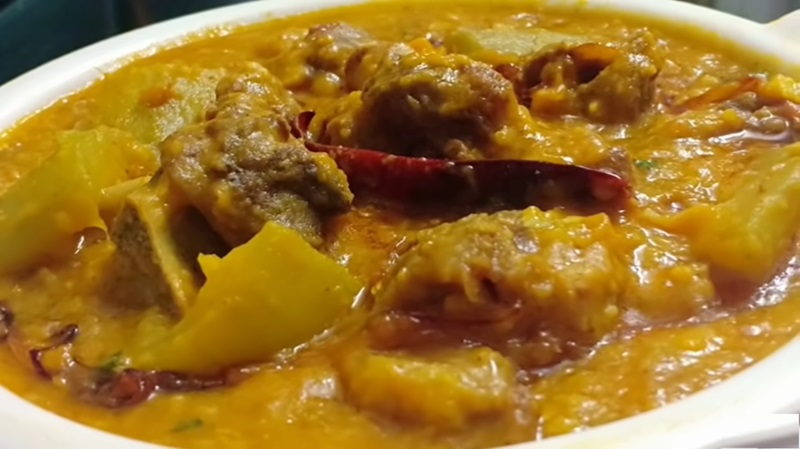
Dalcha, a beloved dish in Hyderabadi cuisine, stands out for its exquisite taste and rich flavors. This culinary delight is a harmonious fusion of lentils, meat, and vegetables, resulting in a delectable and hearty curry. Typically prepared with chana dal or toor dal, these lentils are cooked until tender and then infused with an array of spices for an enhanced flavor profile.
The choice of meat varies, with mutton or lamb being the most popular options. Marinated in a blend of spices, the meat is cooked to perfection, rendering it tender and succulent. The lentils and meat are then artfully combined with vegetables like brinjal, drumsticks, and tomatoes, imparting a tangy and subtly sweet note to the dish.
What truly sets Dalcha apart is its distinctive spice blend. A medley of ginger, garlic, red chili powder, turmeric powder, and garam masala contribute to the curry's aromatic and flavorful essence. Garnished with fresh coriander leaves, Dalcha is traditionally served with steamed rice or roti, offering a wholesome and nutritious meal that transcends age preferences. A true showcase of the opulent flavors of Hyderabadi cuisine, Dalcha remains a satisfying and cherished culinary experience.
Double Ka Meetha
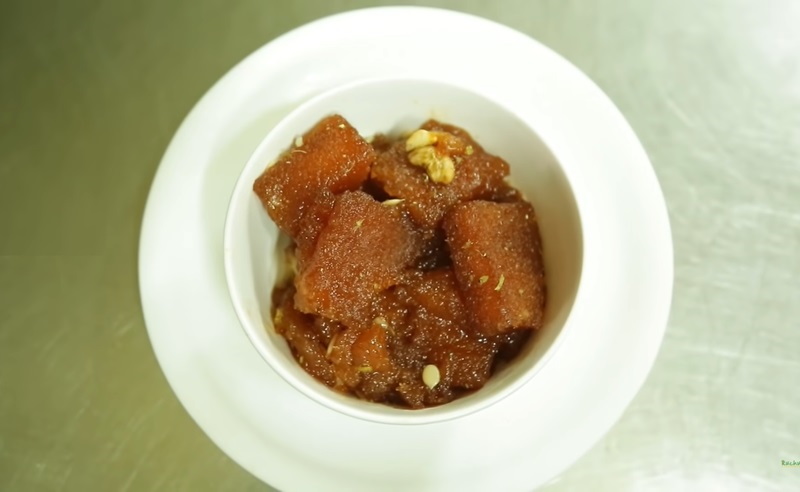
Double ka Meetha, also recognized as Shahi Tukra, stands as a delectable Indian bread pudding sweet, where fried bread slices are immersed in hot milk infused with aromatic spices like saffron and cardamom. Originating from Hyderabad, it has become a quintessential dessert in Hyderabadi cuisine, gracing the tables of weddings and festive gatherings. The name "Double ka Meetha" stems from the characteristic milk bread, locally known as "double roti" due to its substantial expansion post-baking, nearly doubling its original size.
This delightful sweet showcases the culinary finesse of Hyderabad, combining the rich flavors of milk and spices with the indulgence of fried bread. The use of saffron and cardamom adds an exotic touch, creating a dessert that not only satiates the sweet tooth but also embodies the cultural richness of the region. Whether enjoyed at special occasions or as a comforting treat, Double ka Meetha continues to be a cherished and symbolic part of Hyderabadi culinary heritage.
Mirchi Ka Salan
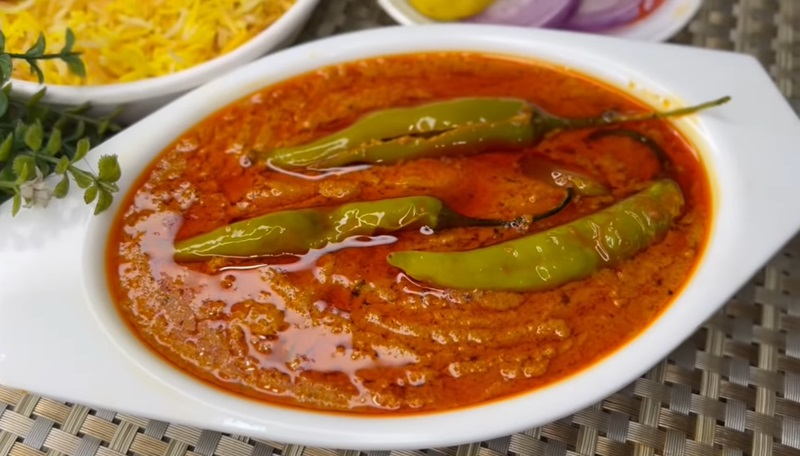
Mirchi ka salan is a popular dish from the Hyderabadi cuisine, known for its rich flavors and spiciness. This dish is made using long, green chili peppers that are carefully slit and deseeded. The chili peppers are then shallow fried until they turn crisp and golden brown. The base of the dish is a tangy and spicy gravy made from a blend of peanuts, sesame seeds, tamarind pulp, and a variety of aromatic spices. The gravy is slow-cooked to perfection, allowing the flavors to meld together and develop a deep, rich taste. Once the gravy is ready, the fried chili peppers are added to it, allowing them to soak up the flavors of the gravy. The dish is then simmered for a few minutes to ensure that all the flavors are well-incorporated.
Mirchi ka salan is typically served as a side dish with biryani or pulao, adding a spicy kick to the meal. The combination of the crispy chili peppers and the flavorful gravy makes this dish a delightful and mouth-watering treat for spice lovers.
Khubani-ka-Meetha
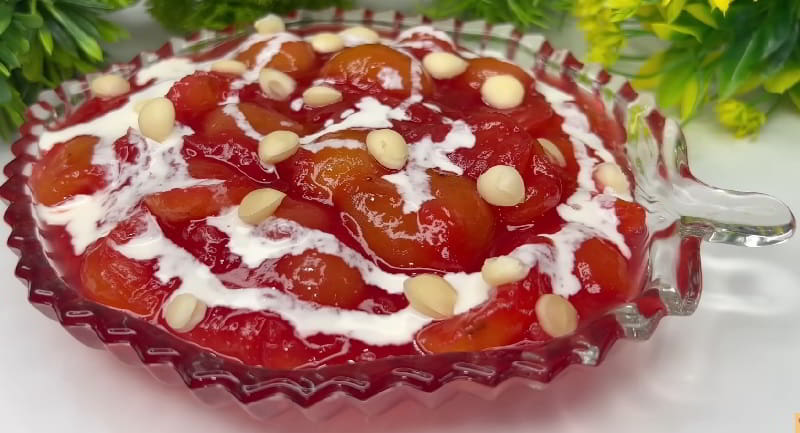
Hyderabadi cuisine is renowned for its rich and flavorful dishes, and one such delectable dessert is Khubani-ka-Meetha. This traditional sweet dish originated in Hyderabad, India and has become an integral part of the region's culinary heritage. Khubani-ka-Meetha is made using dried apricots (known as khubani), sugar, and a hint of cardamom. The apricots are soaked overnight to soften them, and then cooked until they turn tender and pulpy. Sugar is added to enhance the sweetness and cardamom lends a beautiful aroma to the dish. The dish is often served as a dessert after a hearty meal and is typically garnished with slivered almonds or pistachios for a delightful crunch.
Khubani-ka-Meetha can be enjoyed warm or chilled, and is often accompanied by a dollop of rich, creamy vanilla ice cream. The combination of the sweet and tangy apricots with the subtle flavors of cardamom creates a heavenly taste that is both comforting and indulgent. This dessert is a true delight for the senses and a must-try for anyone seeking to explore the flavors of Hyderabad.
Bagara Khana
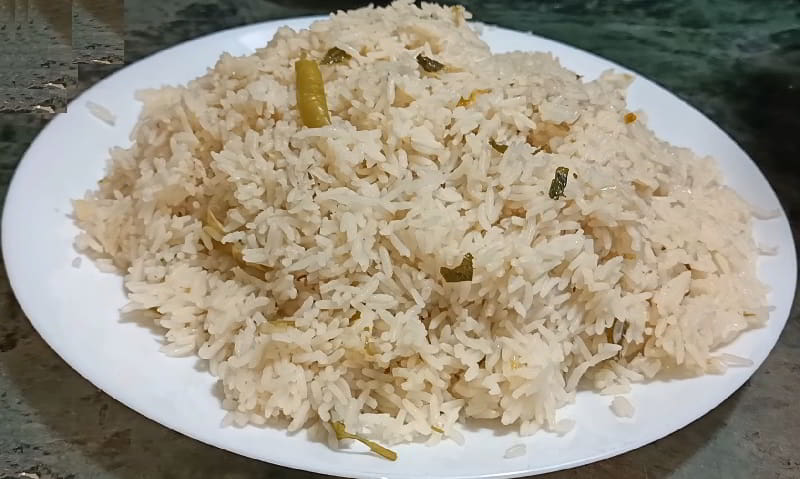
Bagara Khana, also known as Bagara Annam, stands out as a spiced rice delicacy hailing from Hyderabad, Telangana, India. The term "Bagar" signifies tempering, and this dish is a plain Biryani recipe distinguished by its absence of vegetables or masala powders. A staple at weddings and functions in the Hyderabad and Telangana region, Bagara Rice is a culinary highlight for vegetarians in Telangana, earning its place as a must-have main dish.
Crafted from long-grained rice, green chillies,and dark spices, Bagara Rice forms a delightful union with spicy curries such as dalcha or baghara baingan. Its simplicity, accentuated by the artful tempering, allows the aromatic flavors to shine through, making it a preferred choice for those seeking a savory and satisfying meal. As a quintessential part of Hyderabadi cuisine, Bagara Khana represents a culinary tradition that continues to captivate palates with its straightforward yet richly flavorful profile.
Shahi Tukra
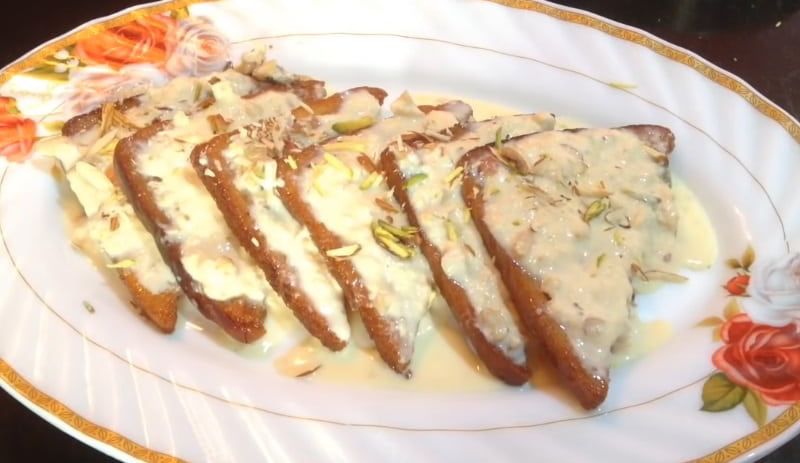
Shahi Tukra, a bread pudding with roots tracing back to South Asia during the Mughal era in the 1600s, derives its name from the literal translation, "royal piece" or "royal bite." Its inception occurred in the illustrious kitchens of the Mughal Empire, where Indian chefs crafted this delicacy to present to the royal Mughal courts. This dessert, made by frying white bread in oil/ghee and then soaking it in a mixture of milk and sugar, is enriched with flavors of saffron, cloves, and cardamom.
Widely regarded as a Mughal creation, with its likely origin in Hyderabad as reported by DNA India, Shahi Tukra earned favor among Mughal emperors, particularly during the holy month of Ramadan. Its enduring popularity extends to being a sought-after delicacy during Eid-ul-Fitr, marking the culmination of Ramadan, in South Asian celebrations. This regal and sweet legacy continues to captivate palates, showcasing the rich history and cultural significance embedded in Shahi Tukra.
Maghaz
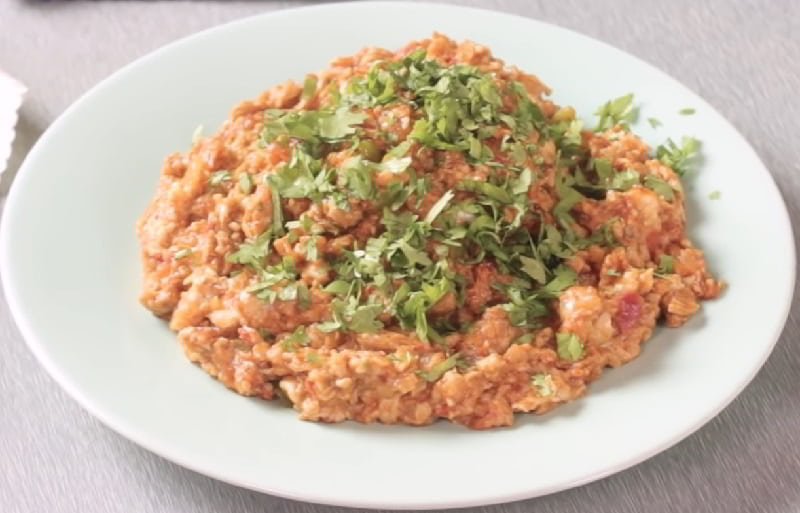
Maghaz is a popular dish in Hyderabadi cuisine known for its rich and flavorful taste. It is a traditional delicacy made from goat brain, cooked with a blend of aromatic spices and herbs. The word "Maghaz" translates to "brain" in Urdu, which is the key ingredient in this dish. To prepare Maghaz, the brain is first cleaned and then marinated in a mixture of yogurt, ginger-garlic paste, and a variety of spices. It is then cooked slowly over a low flame, allowing the flavors to infuse and the brain to become tender. The result is a creamy and melt-in-your-mouth texture that is truly delightful.
Maghaz is commonly enjoyed as a breakfast or brunch item, served with warm roti or naan bread. It is often garnished with fresh coriander leaves, chopped onions, and a squeeze of lemon juice to enhance the flavors further. The unique combination of spices used in Maghaz gives it a distinct taste that is both spicy and tangy. It is a dish that exemplifies the rich culinary heritage of Hyderabad, and is a must-try for anyone looking to experience the authentic flavors of this region.
Manda Roti
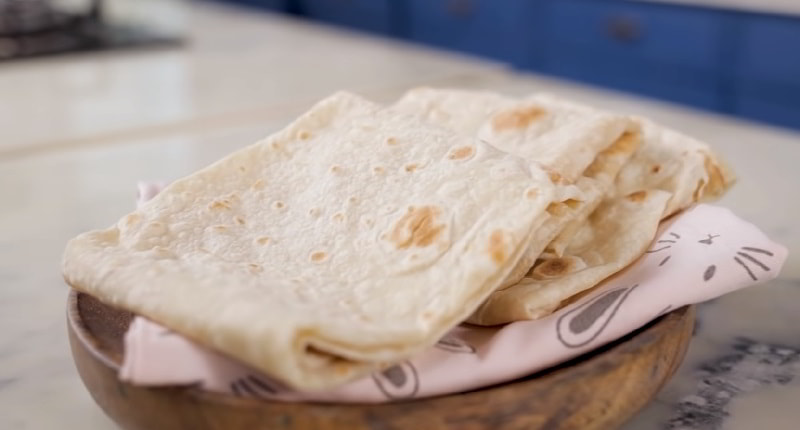
Hyderabadi cuisine, renowned for its flavorful amalgamation of Mughlai and South Indian influences, showcases the culinary finesse in dishes like the Manda Roti. Also known as Rumali Roti, this traditional Indian flatbread holds historical significance, appearing in religious Sanskrit literature, purāṇas, and culinary texts like Nighantus and Bhojanakutūhala.
Known for its exceptionally delicate and pliable texture, Manda Roti is skillfully fashioned from a combination of whole wheat atta and white wheaten maida flours, undergoing expert cooking on the convex side of a kadahi. This culinary creation acts as a unifying element between different regions, recognized as Veechu Roti in Tamil and Mandige in various other parts of South India. Its delicate nature, reminiscent of a folded handkerchief, epitomizes the exquisite intersection of culinary traditions in the vibrant tapestry of Hyderabadi cuisine.
Hyderabadi Marag
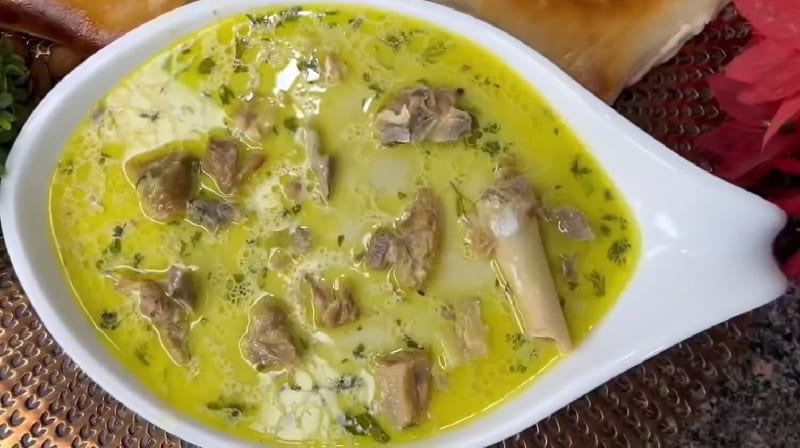
Hyderabadi Marag, a savory mutton soup, serves as a distinctive starter in the vibrant culinary landscape of Hyderabad, India, encapsulating the essence of Hyderabadi cuisine. Crafted from tender mutton with bone, this thin and aromatic soup has earned its place as a popular prelude to Hyderabadi weddings. The soup boasts a rich medley of locally sourced ingredients, including mutton with bone, cashew nuts, onions, curd, boiled milk, cream, ginger-garlic paste, black pepper powder, coconut powder, salt, cinnamon, cardamom, cloves, and green chillies. This flavorful combination delivers a harmonious blend of spices and textures, creating a culinary experience that resonates with the distinctive taste preferences of the region.
Hyderabadi Marag, with its roots deeply embedded in local traditions, has evolved into a cherished and flavorful starter, embodying the cultural richness of Hyderabad's gastronomic heritage.
Lukhmi

Lukhmi, a savory mince pie native to Hyderabad, stands as a distinctive local variation of the samosa, with a unique preparation reminiscent of a flat square patty. This delectable snack is a non-vegetarian delight, filled with flavorful mutton-mince kheema (ground meat), diverging from the traditional samosa in both shape and content.
The term Lukhmi finds its roots in the word loqma, signifying a morsel, encapsulating the essence of this appetizing treat. The dough, prepared with a blend of minced meat (kheema), flour, and yogurt, undergoes a meticulous process to achieve a smooth consistency. The flattened squares are then generously filled with the minced meat mixture.
Kheemey-ki-Lukhmi remains a cherished starter in authentic Hyderabadi weddings and celebratory events, embodying the cultural significance and culinary finesse of the region. With its unique shape and delectable filling, Lukhmi has become a symbol of the diverse and flavorful offerings in the vibrant tapestry of Hyderabadi cuisine.
Baghaar-e-Baingan
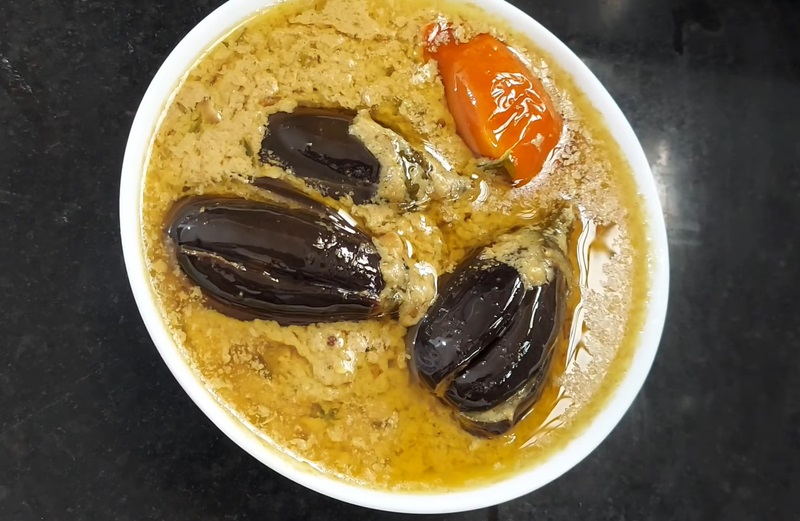
Baghaar-e-Baingan, a beloved Indian curry originating from Hyderabad, is a delightful and aromatic dish that showcases the diverse flavors inherent in Indian cuisine. This culinary gem features eggplant (baingan) prepared through a unique tempering technique known as "baghaar." The preparation involves roasting the eggplant until it achieves a soft and tender consistency. The tempering mixture, composed of ghee (clarified butter), cumin seeds, mustard seeds, fenugreek seeds, and curry leaves, is skillfully poured over the roasted eggplant, imparting a burst of flavors and fragrances. The curry is further enriched with a blend of ground spices like turmeric, red chili powder, coriander powder, and garam masala. Slow-cooked to perfection, Baghaar-e-Baingan allows the amalgamation of flavors, resulting in a rich and hearty curry.
This delectable dish finds perfect companionship with steamed rice, roti, or naan. Baghaar-e-Baingan captivates with its smoky roasted eggplant, aromatic spices, and the distinctive touch of the tempering technique, making it a favorite among curry enthusiasts and an essential exploration for those delving into the vibrant realm of Indian cuisine.
Dahi Chutney
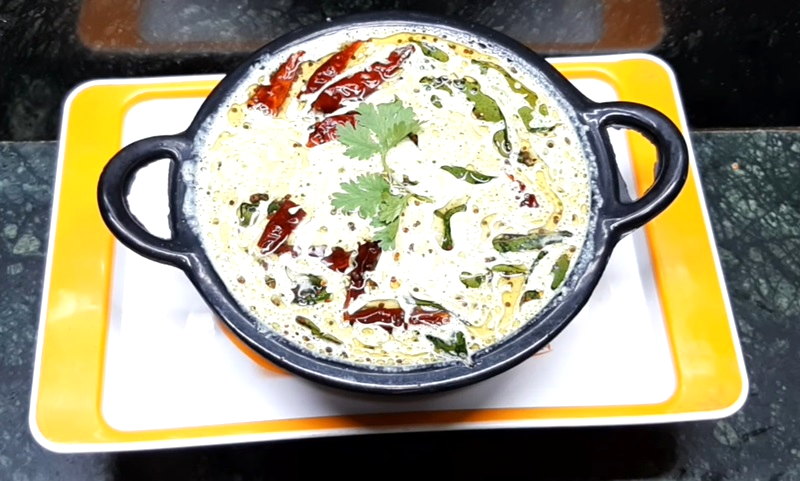
Dahi Chutney, a delectable creation from the Indian subcontinent, involves strained yogurt intricately blended with a chutney featuring mint and onions. Particularly popular in South India, this flavorful accompaniment plays a crucial role alongside mirchi ka salan in the beloved Hyderabadi biryani.
The traditional components include yogurt, onions, tomatoes, mint leaves, coriander, chili peppers, and salt, all contributing to a harmonious taste. Various preparation methods exist for this versatile side dish. One approach involves chopping mint, coriander, and a chili pepper before blending them with yogurt in a blender. Alternatively, a simpler method entails mixing diced onions with salt and coriander directly into a bowl of fresh yogurt, presenting a refreshing and tangy accompaniment ready to enhance the dining experience. The adaptability and flavorful profile of Dahi Chutney make it a sought-after pairing for diverse dishes, adding a touch of freshness to the vibrant tapestry of Indian culinary traditions.
Pathar-ka-Gosht
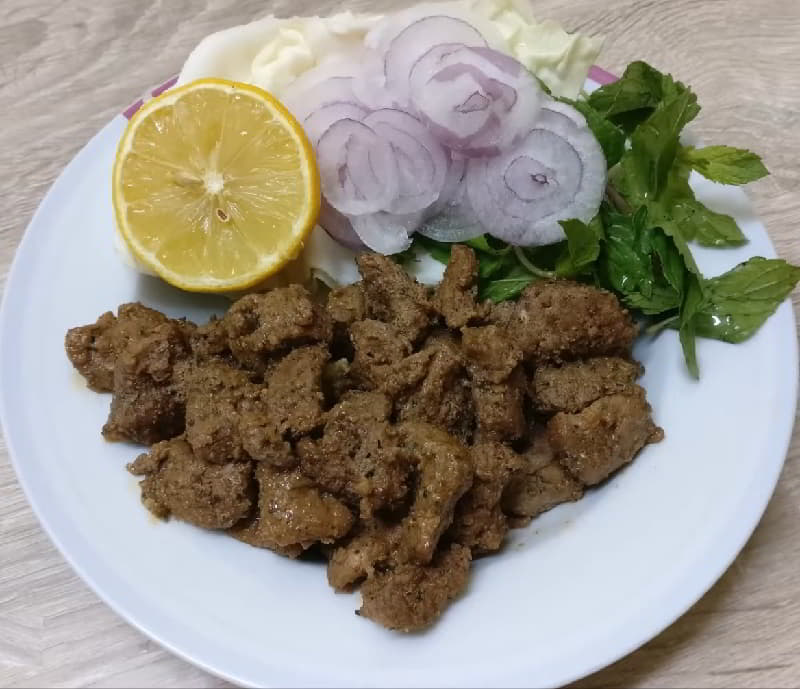
Pathar-ka-Gosht, a well-loved lamb dish, finds its culinary roots in Hyderabad, Telangana, India. In this preparation, mutton takes center stage, undergoing a unique cooking process on a broad stone surface over an open flame. The method involves heating the meat on the stone, imparting a distinctive flavor to the dish. Once the lamb pieces are adequately heated, a blend of aromatic spices is introduced, enhancing the overall taste profile.
This delectable creation is typically served alongside onions and complementary ingredients, adding layers of flavor and texture to the dish. The use of a stone surface in the cooking process not only imparts a distinct taste but also showcases the regional culinary ingenuity of Hyderabad. Pathar-ka-Gosht is a dish that embodies the essence of Hyderabadi cuisine, known for its robust flavors and unique cooking techniques.
Kulfa Gosht
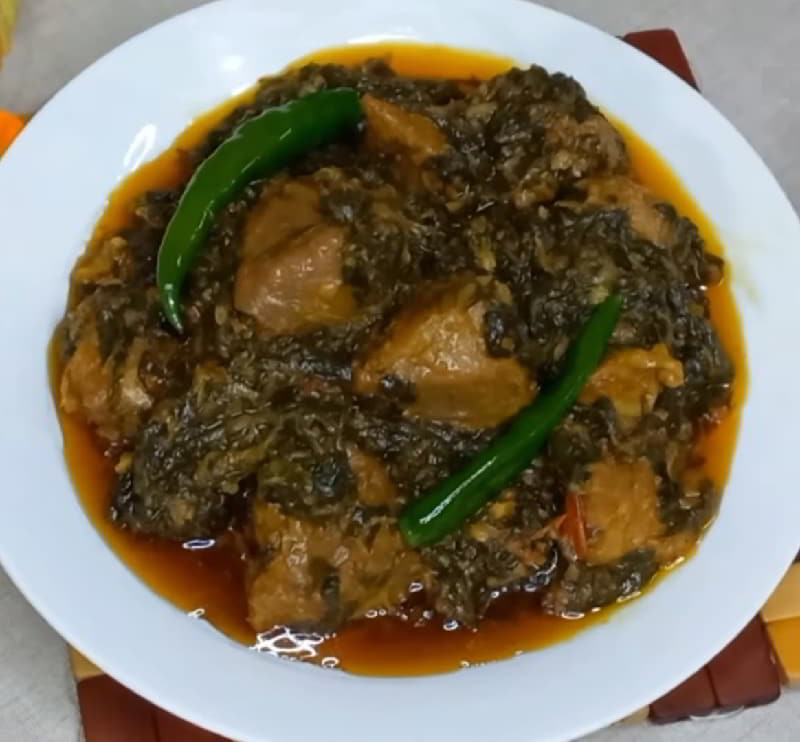
Kulfa gosht is a delectable dish that hails from the vibrant city of Hyderabad in India. This Hyderabadi cuisine is a perfect blend of Mughlai and Andhra influences, resulting in a rich and flavorful delicacy. The star ingredient of this dish is the tender mutton or goat meat, which is slow-cooked in a luscious gravy made from a variety of aromatic spices. The meat is marinated in a mixture of yogurt, ginger-garlic paste, and spices like red chili powder, turmeric, and garam masala, which imparts a robust flavor to the dish. What sets Kulfa gosht apart is the addition of kulfa leaves, also known as purslane, which lends a unique tangy taste to the gravy. These leaves are added towards the end of the cooking process, infusing the dish with their distinct flavor. The result is a succulent and tender meat dish with a hint of sourness that tantalizes the taste buds.
Kulfa gosht is typically enjoyed with fragrant basmati rice or naan bread, making it a wholesome and satisfying meal. This traditional Hyderabadi delicacy is a must-try for anyone looking to experience the rich and diverse flavors of Indian cuisine.
Hyderabadi Pickle
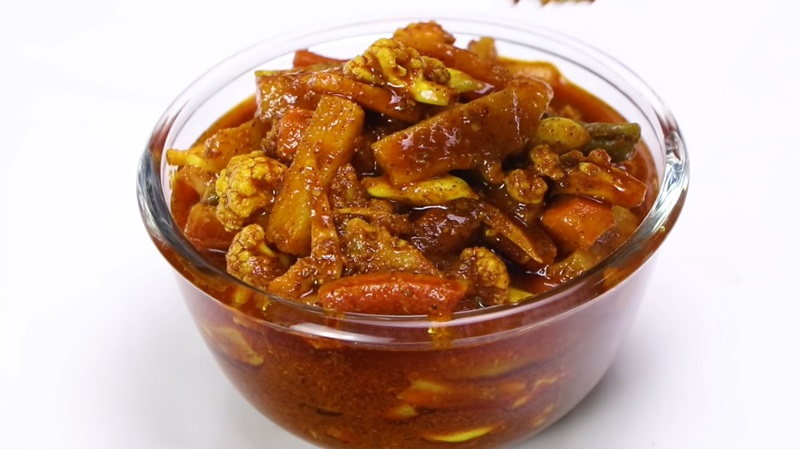
Hyderabadi pickle represents a unique Indian culinary creation. This pickle variation encompasses an array of flavors, including a delicate mix of fruits, with mangoes taking center stage, and vegetables. The ingredients undergo natural processes, matured with carefully selected spices, all prepared and preserved using traditional methods. The outcome is a flavorful assortment that captures the essence of Hyderabadi culinary craftsmanship, presenting a delightful blend of tastes and textures.
The pickle is usually stored in airtight jars and can be enjoyed for months. Hyderabadi pickle is a versatile condiment that can be enjoyed with a variety of dishes. It adds a burst of flavor to rice, biryanis, curries, and even sandwiches. The combination of spices and tangy flavors make it a favorite among pickle enthusiasts. Whether you are a fan of pickles or looking to explore new flavors, the Hyderabadi pickle is a must-try dish that will leave you craving for more.
Roat

Roat, colloquially known as Dum ke Roat, emerges as a sweet confectionary delight hailing from the vibrant city of Hyderabad, India. Particularly popular during the month of Muharram, the first month of the Islamic calendar, Roat carries cultural and historical significance. The preparation involves a blend of refined flour, semolina, dry fruits, raisins, ghee, and saffron, formed into a dough and baked in the oven, with "Dum" indicating the steaming process.
The term "Roat" draws its roots from "Roti" (flatbread), evolving from a traditional recipe where women enhanced the basic Roti with sugar and extra ghee, offering it in Alam ceremonies. The evolution led to baking, making the process more convenient. According to legend, in the annual Muharram procession of 'Nala-e-Mubarak' Alam in the Old City, the Nizam of Hyderabad, Mir Osman Ali Khan, extended an offering of Roat for the prosperity and safety of his grandson, Mukarram Jah. This age-old tradition endures, and Roat continues to be a customary offering, traditionally presented after the conclusion of gatherings in an Ashurakhana.
Khatti Dal
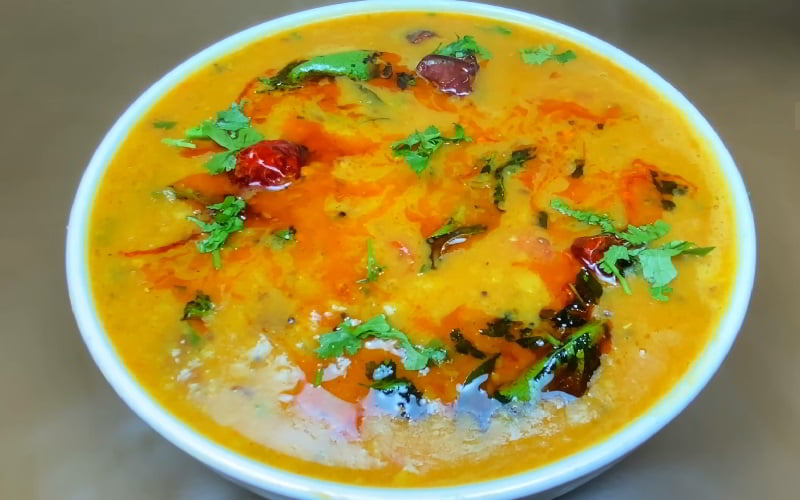
Khatti Dal, a staple in Hyderabadi cuisine with its roots in India, is a delightful dal dish prepared using Masoor dal or Toor dal. This well-loved dish, embraced in Andhra Pradesh and Telangana, derives its name from "khatti," meaning "sour," reflecting its distinct tanginess achieved through the infusion of tamarind. Khatti Dal pairs harmoniously with various meat or vegetable dishes, presenting a flavorful fusion of lentils, spices, and the pronounced sour note. This culinary gem mirrors the rich and diverse taste inherent in Hyderabadi traditions.
Often served hot with steamed rice or roti, Khatti Dal provides a hearty and satisfying meal, inviting everyone to relish the bold and vibrant flavors that define the authentic essence of Hyderabadi cuisine. A must-try for those seeking an immersive journey into the region's culinary heritage.
Tala Huwa Gosht
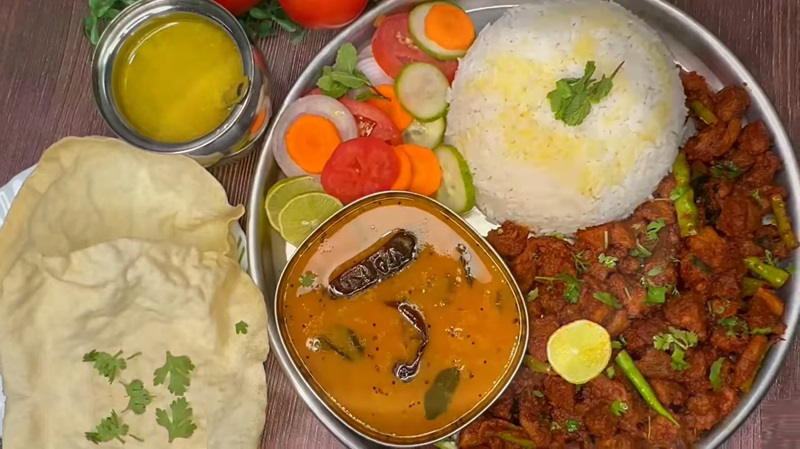
Talawa Gosht, a culinary gem originating from the vibrant city of Hyderabad, India, stands as a testament to the rich and diverse gastronomic traditions of the region. This Hyderabadi dish is celebrated for its simplicity, featuring lamb or beef as the primary protein and a medley of basic flavorings that come together to create a symphony of taste.
The preparation of Talawa Gosht involves a careful selection of spices and ingredients, showcasing the culinary expertise that defines Hyderabadi cuisine. The dish is often paired with Mithi Dal or Khatti Dal, two distinct lentil preparations that complement the savory notes of the meat.
The name "Talawa Gosht" is a delightful reflection of the dish's essence in the local Hyderabadi Urdu dialect. In its full Urdu form, it is known as "Talaa-wa-Gosh," with the shortened version "Talawa Gosht" affectionately embraced by those who savor its delectable flavors. Typically enjoyed with rice, this dish has become a cherished part of Hyderabadi culinary culture, embodying the spirit of simplicity and authentic taste that defines the region's food traditions.
Kairi Ka Do Pyaza
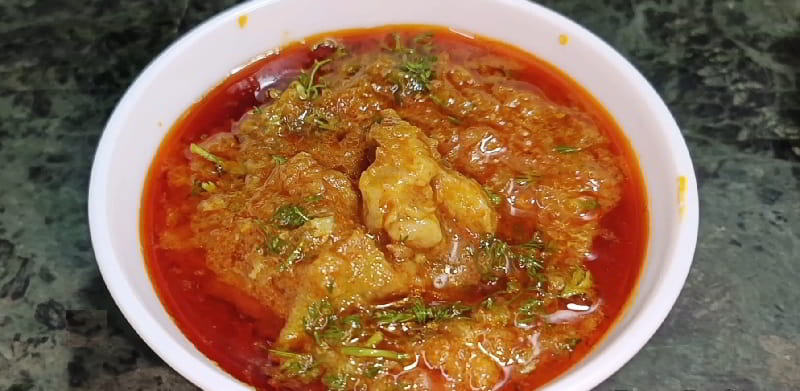
Kairi ka Do Pyaza is a lamb meat dish featuring unripe green mangoes, originating from Hyderabadi cuisine in Hyderabad, India. This flavorful preparation is particularly popular among the local Muslim community. Dopiaza, the gravy base, emphasizes onions and a souring agent. Unripe green mangoes, known for their acetic flavor, lend a distinctive kick to the curry. Various souring agents like tomatoes, lemons, and gooseberries can be used, offering versatility in Do Pyaza recipes, accommodating both meat and vegetarian versions.
The culinary brilliance of this dish lies in the melding of succulent lamb, tangy mangoes, and the rich Dopiaza gravy, creating a distinctive and harmonious flavor profile that reflects the region's culinary heritage. Kairi ka Do Pyaza stands as a testament to the culinary creativity and distinctive flavors celebrated in Hyderabadi cuisine.
Tamate Ka Kut
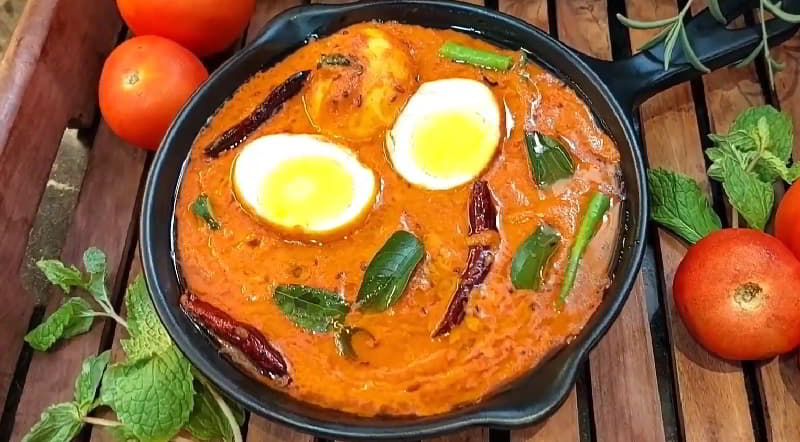
Tamate ka Kut, a cherished dish in Hyderabadi cuisine, showcases the vibrant flavors of ripe tomatoes and a medley of aromatic spices. The dish derives its distinct taste from the tangy tomatoes, meticulously cooked to enhance their natural sweetness. The term 'kut' in the recipe signifies the incorporation of a dry-roasted and powdered spice mix. This swift and uncomplicated Tamate ka Kut boasts a luscious, creamy, and nutty essence, accentuated by the tangy undertones of tomatoes. The inclusion of ingredients such as onion seeds and garlic in the tempering further enriches the flavor profile and aromatic appeal of this culinary delicacy. To create Tamate ka Kut, tomatoes undergo blanching and are then pureed to a silky consistency. This puree is combined with an array of spices, including cumin seeds, ginger-garlic paste, red chili powder, turmeric powder, and garam masala. Tamarind pulp introduces a delightful tanginess to the dish. Slow-cooking allows the tomatoes to meld with the spices, resulting in a rich and flavorful curry.
Garnished with fresh coriander leaves, Tamate ka Kut is best enjoyed hot with roti or rice. Its marriage of a luscious tomato base and aromatic spices offers a burst of delightful flavors in each bite. This beloved dish, celebrated in the Telangana region, captures the essence of Hyderabadi culinary excellence with its tangy and spicy allure.
Kheer
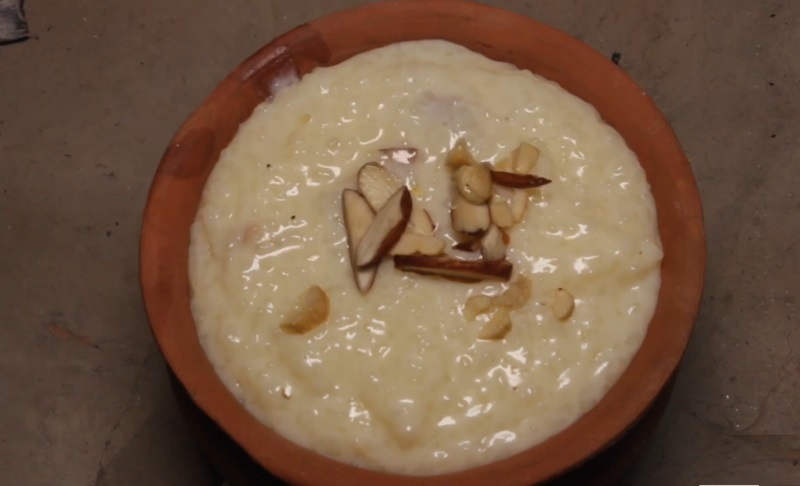
Kheer, a beloved dessert holds a cherished place in various cultural and festive celebrations. Commonly made during festivals, weddings, and special occasions, kheer is a rice pudding prepared by slow-cooking rice in milk and sweetening it with sugar. Infused with aromatic spices like cardamom and garnished with nuts such as almonds and pistachios, kheer boasts a rich and creamy texture.
Its versatility extends to variations like sabudana kheer and vermicelli kheer, showcasing regional adaptations. The process of simmering the ingredients allows the rice to absorb the essence of the milk, creating a delightful harmony of flavors. Served warm or chilled, kheer stands as a symbol of warmth, tradition, and the sweet moments shared with loved ones, making it a timeless and comforting dessert in the culinary tapestry of South Asia.
Pashti
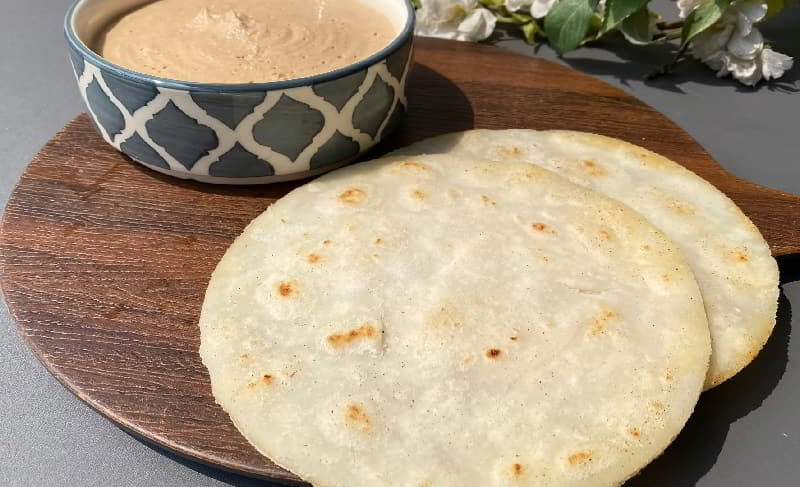
Pashti, a traditional flatbread hailing from the Southern Indian subcontinent, captures the essence of regional culinary heritage. This delightful bread, crafted with rice flour, undergoes a meticulous preparation process, showcasing the culinary expertise synonymous with the region.
The making of Pashti begins with kneading rice flour in hot water, a crucial step to ensure a smooth and lump-free dough. Cold water is purposefully avoided in this process to maintain the desired consistency. Once the dough attains the perfect texture, it is skillfully rolled out using a rolling pin, creating thin circles that will soon transform into delectable flatbreads.
Cooked to perfection, Pashti comes to life on the griddle or pan, sizzling in ghee or cooking oil. The result is a golden-brown masterpiece, ready to be savored with an array of accompaniments. Pashti finds its ideal pairing with flavorful chutneys, notably the peanut-based Phalli Ki Chutney, or served alongside a hearty curry, creating a symphony of tastes that reflect the diverse and vibrant palate of Southern Indian cuisine. With its simplicity and versatility, Pashti stands as a staple that embodies the rich culinary traditions of the region.






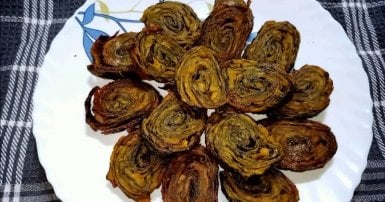
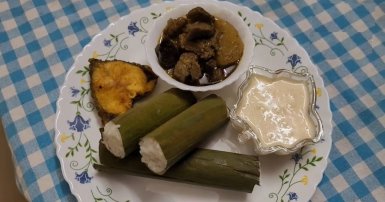
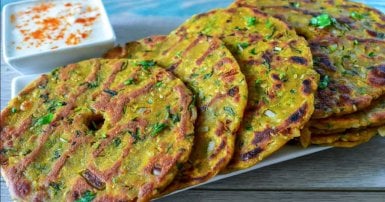
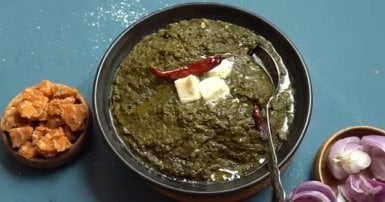
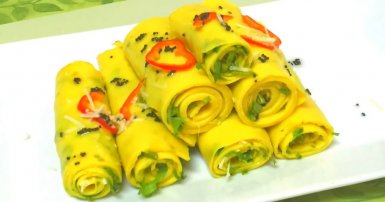
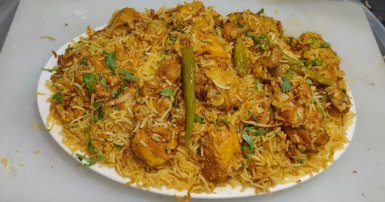

-1709813013.jpg)


